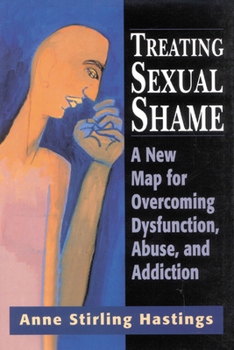Treating Sexual Shame: A New Map for Overcoming Dysfunction, Abuse, and Addiction
Select Format
Select Condition 
Book Overview
In therapy, as in the world at large, sexuality is different from other issues because of the culturally imposed secrecy and shame that inhibit open, non-defended talk about it. Anne Stirling Hastings, Ph.D., who specializes in treating the overlapping sexual problems of abuse, addiction, and dysfunction, encourages clinicians to recognize and overcome their own shame as a precondition to eliciting and advancing their clients' awareness.
Format:Hardcover
Language:English
ISBN:0765701030
ISBN13:9780765701039
Release Date:January 1998
Publisher:Jason Aronson
Length:332 Pages
Weight:1.24 lbs.
Dimensions:1.1" x 5.8" x 8.5"
Customer Reviews
2 ratings
Interesting but subjective and anecdotal
Published by Thriftbooks.com User , 24 years ago
Well written and readable with good case vignettes and courageous use of the writer's autobiography. It is apparently directed at other therapists but offers some embarassingly (now why did I pick that word?)elementary information about such matters as anatomy, so that at times she seems to be addressing a general readership. She is uncritical about some of her sources eg "Acupuncture directly works on the energy channels" and disdains statistical evidence. There is an index and references but no attempt to completely review the literature and other viewpoints are dismissed without full evaluation. On the whole I would recommend it to anyone working in the field but would want a neophyte to read a few other rhings.
Relevent for therapists dealing with any aspect of sexuality
Published by Thriftbooks.com User , 26 years ago
This is a useful book in the evolving dialogue that reflects the level of wisdom emerging in the field of sexuality recovery. Hastings addresses the overlapping fields of sex therapy, sex abuse recovery, and sex addiction recovery, noting how therapists in one field may have only passing knowledge of the others. Hastings continues her championing of liberation from shame as the key to growth in all of these related areas. As she succinctly writes, "shame needs to be elicited so that it can be discharged", and examples of this approach are abundant. She makes good sense in describing the unhealthy culture in which our repressions and addictions take root. "Healing sexuality is far more than healing sexual problems", and the author gives numerous examples of distorted thinking and goals in sexual expression. Helpful analysis of flirting and jealousy highlight the maturity of Hastings' approach. Sometimes this book seems directed for clients, other times for therapists. The specific chapters detailing clinical issues (countertransference, arousal in the therapeutic setting, limit setting, therapist self-exploration and healing, for example) make this a particularly useful book for all counselors. There are quite a few case vignettes and examples of therapist questions to use with clients. A solid and admirable work that will benefit many therapists and the clients they serve.






